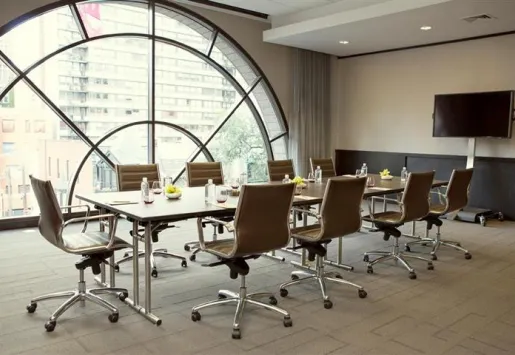
A recent Meetings & Events report by Carlson Wagonlit states that 2015 has been a year of dualities from a global economy standpoint. While North America is once again thriving with a stronger dollar and a demand for accommodation and event hosting that even exceeds the supply that is quickly making itself available in this situation, the rest of the world is falling back.
Europe may be getting back on its feet, but like Japan, the Old Continent’s economy can’t keep up with the North American recuperation, while the economies of emerging markets like China, Russia or Brazil are now stagnating and lagging, instead of having big spurts of growth, as expected.
With this situation in mind, hotels are becoming less and less flexible when booking meetings and events, especially in high-demand cities. A firm hand is being used by sellers on key clauses such as cancellation and food and beverages, and the ability to rebook space for later dates and resell unused rooms is being limited to the max. It is also worth noting that the attrition clauses offered are now at 10-15%, but planners should be cautious as hotels are increasingly reluctant about holding venues, creating a real risk of lost space.
Looking at specific regions, in particular, the situation in Asia shows a local dichotomy. While the economic situation and frequent health scares bring enormous challenges to this market, China and India still drive a substantial demand, thus carrying the Asian economy and increasing the prices locally.
Aside from China, which is seeing the biggest increase in business, as hotel chains expand into the country, Indonesia is also being targeted as a new market for the industry. The increase in costs is, however, being tempered by the new supply, even as meeting planners in the Asia Pacific prefer to look at Strategic Meetings Management (SMM) programs in order to further reduce the costs of event planning in the area.
In Europe, caution still reigns even as the economy regains its feet. Meetings are being held internally, for fear of a slide back into recession. However, the positive indicators are slowly driving business back into the Old Continent, and an increase in hotels under construction is being registered even as the fear of inflation caused by increased demand looms. SMM strategies are increasingly compelling in the region, but still suffer with strong resistance.
In Latin America, conditions are changing and so is the local market. Pharmaceutical clients are, like in the Asia Pacific region, the driving force for the meetings industry, but while supply is still growing, demand is somewhat stagnating, due to the economic challenges the region faces, especially in Brazil and Argentina. SMM is popular in these biggest countries, but individual planning still remains the top choice.
Finally, North America is a booming market for meetings and events. While incentive trips will still be held abroad, an increase in domestic events is expected, as the region becomes even more popular and supply increases to meet, even surpass, demand especially in big cities like New York, Houston or Dallas. SMM is a common strategy in the US, but local companies are expected to expand the strategy into new markets, particularly Latin America, in 2016.













